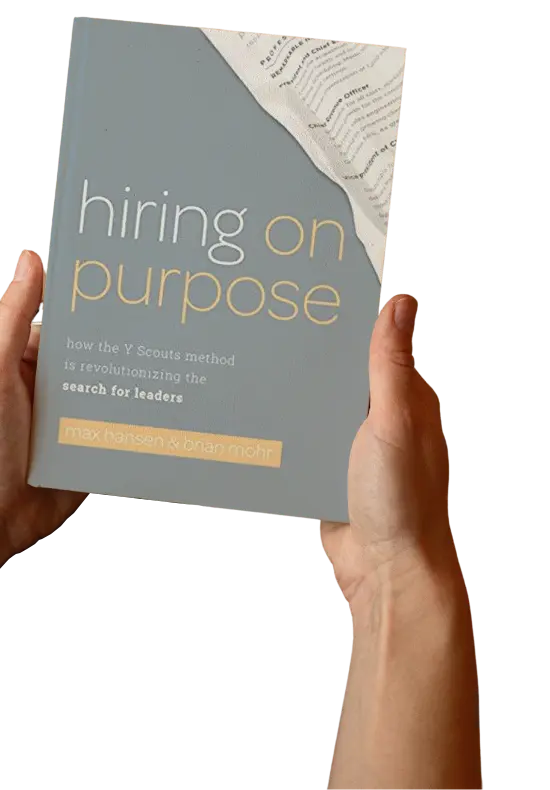The design thinking framework was first used by designers (hence the name), but the principles can be applied to many disciplines. In fact, talent acquisition strategies are embracing the benefits of design thinking. We define design thinking as:
A structured, iterative, and empathic methodology used to solve problems and discover imaginative opportunities in order to deliver the most compelling experience for the end users.
Empathic. Creative. Imaginative. Soft words for a huge concept. At its core, design thinking is really about how the end user feels. That doesn’t mean, however, that design thinking is short on hard benefits. In fact, design thinking can help you develop robust talent pipelines, build complementary capabilities and increase your organization’s effectiveness in identifying, hiring and retaining the best people.
Your talent acquisition strategy can be multifaceted, including workforce planning, diversity and inclusion, effective onboarding, the use of data and technologies, and more. In this article, however, we’ll focus on sourcing and recruiting. Of course, the same design thinking approach can be applied across the talent strategy.
Table of Contents
ToggleWhat Are the Benefits of Design Thinking?
The benefits of design thinking are far-reaching. It can help you:
- Mitigate the risk of adopting innovative solutions.
- Transform, rather than make incremental changes to, existing processes.
- Increase project cohesion among the leadership team.
- Leverage diversity while reducing division.
- Encourage employee buy-in for change.
In terms of talent acquisition, design thinking can help your recruiting team eliminate one of the biggest impediments to optimal recruiting: human bias. That’s because you’ll follow a process designed to challenge the status quo and deploy critical thinking.
How Can You Apply Design Thinking to Talent Acquisition Strategy?
Just as market-driven solutions are best in product and service development, the same can be said about augmenting your executive team. In addition to the market realities, you must understand the talent pool and what potential candidates will require to bring their best to your company. No organization can afford to lose prime talent to competitors or make expensive hiring decisions that they must later correct.
As always, start with the end in mind. The question for your management team is: What do we want to accomplish with our talent strategy? Before you start cranking out ideas, you need a well-designed process. Some potential steps are detailed below.
Discovery
Start with a series of questions that help define the problem. Make the questions as specific as possible but avoid naming a solution. For example:
- Too general: How do we hire the best people?
- Better: How can we let go of our behavioral norms and still hire and retain those who complement our culture?
- Better: How can we expand diversity and encourage the acceptance of new ideas?
Conduct Research
Investigate the sourcing and recruiting processes within your company. Ask recruiters and interviewers what they do, how they do it and why. Ask recent hires, and even people you chose not to hire, about their experiences. Keep the questions open-ended. Conduct mock interviews. Investigate the places, virtual and in-person, where you will find likely candidates. Set up a process to document everything discovered so that there is a common database of information.
Insights
Evaluate the data for patterns and revelations. Where is the process weak? Where are the redundancies? Are there pain points that you should address? For example, do you require interviewees to cover expenses that are later reimbursed? How do they feel about it? Reducing friction is a key component of design thinking, and should be the goal of evaluating your interview process. Challenge team members to let go of their personal biases about how the interview process should work and ask questions about how it could be improved.
Salient Questions
Once you’ve uncovered the issues, distill the insights down to a few key questions. Now you have a design thinking interview. You can’t tackle everything at once, so decide where you can get the most leverage for your investment.
Ideation and Emergence
Identify solutions. You can involve recruiters, hiring managers, executives, human resources personnel, recent hires and other stakeholders. Groups of five or six people are optimal to encourage a free exchange of ideas. Use sticky notes within each group, then categorize the notes, continuing to eliminate redundant and overlapping ideas until you have a small set of the best options. Keep challenging the status quo.
Articulation
Further develop your strategies. Keep in mind the question: What are the circumstances that would enable this solution? For example, assume you want to hire very experienced people in a talent-strained market. What would need to happen to enable your strategy? Ask for feedback as you go and refine your strategies as needed.
Test
Put your solutions to work. Create job descriptions (or work with an executive search firm that leverages a more comprehensive role visioning process), look for potential candidates, compile questions for interviewers, meet with likely prospects. Do not invest too much in any one prototype. Perhaps you’ll want to try an A and a B solution to see which works best.
Improve
Build in mechanisms to gather feedback, whether in a shared database or via follow-up meetings. Capture lessons learned and incorporate new information into your processes.
How Is Design Thinking Different From Brainstorming?
Even the staunchest proponents of brainstorming recognize its limitations. Much of what we assume about brainstorming is false. It rarely leads to out-of-the-box solutions. That’s because the desire to fit in with the group often takes priority over innovation and creativity. The path least traveled may be incongruent with “safe.” Remember that the point of brainstorming is to involve everyone, not necessarily to find innovative answers.
The goal of design thinking is to optimize your talent acquisition strategy so that you hire the best people…people who bring the right skills and capabilities and align with the company’s values and objectives. This requires a deliberate process and a thorough understanding of the end users. Design thinking is not a linear process. You may, in fact, find yourself revisiting activities to ensure that you’re getting the best results. The important thing is that you create good strategies and build, along the way, the buy-in needed for success.
Make Your Talent Acquisition Strategy Count
You can increase your success by introducing objectivity into the process. This may mean, for example, bringing in a focus group or retaining a professional executive search team. After all, Your product development is strategic, your business locations are strategic and even the layout of your office is strategic. It’s equally important to hire the right people through good partners, sound practices and proven processes.
Y Scouts can help you leverage design thinking leadership and your talent acquisition strategy to find your next executive. Hiring must be more than a top-down approach. At Y Scouts, we are driven by passion and empathy to find the right person and deliver on a forward-looking vision. That’s hiring on purpose. It’s what we do.



